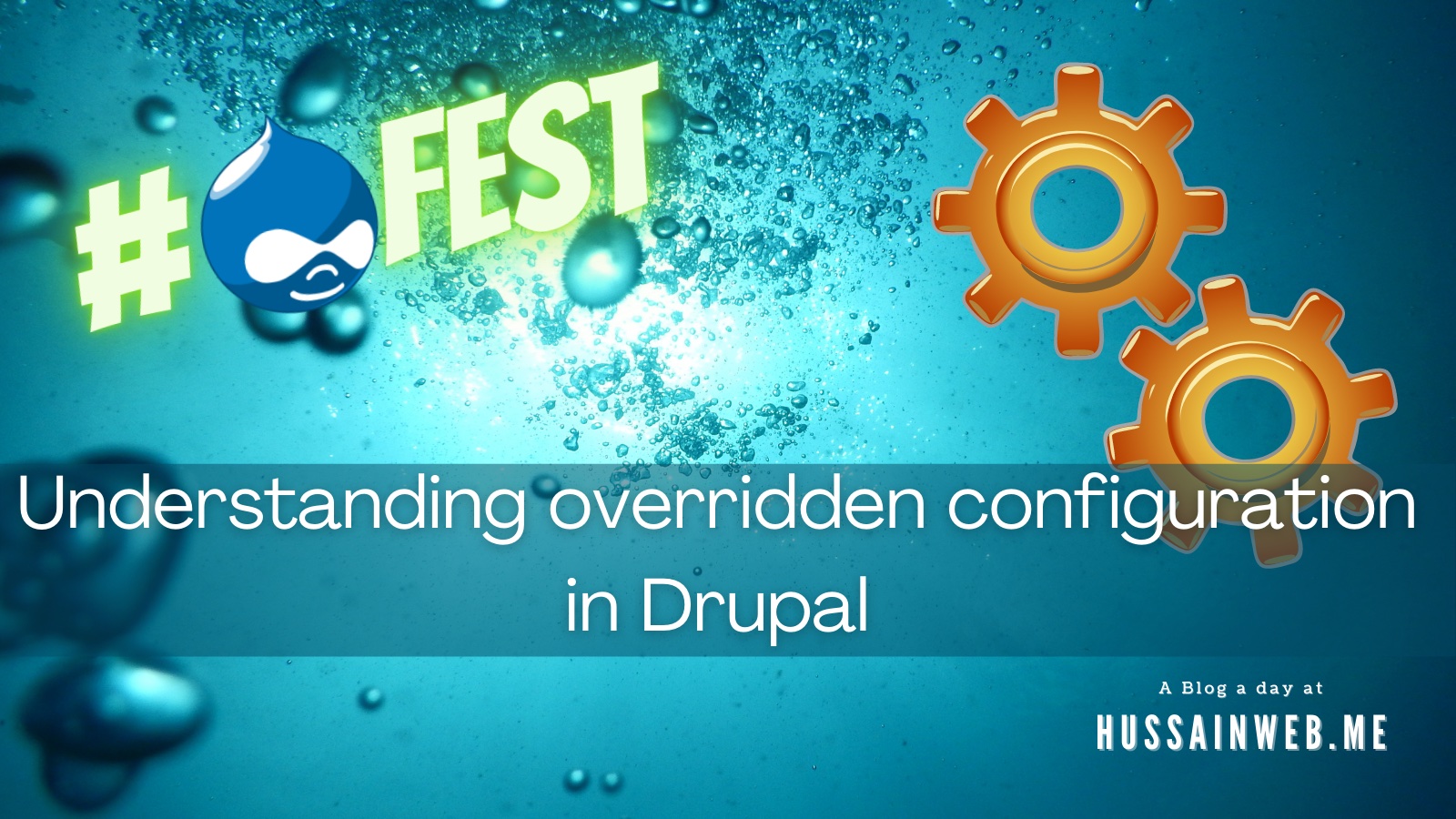The configuration API is one of the major areas of progress made in Drupal 8. It addresses many challenges of managing a site across environments for Drupal 7 and before. It’s not perfect. After all, it’s just version 1 and there is work going on in CMI 2 to fix the problems in the current version. That is not the subject of this blog post, however. In this post, I want to talk about one of the lesser understood features of configuration management: overriding.
Most site builders and developers interact with the Drupal configuration API with “drush config-export” and “drush config-import”. Except for a minor exception, Drupal configuration is an all-or-nothing deal, i.e., you apply the configuration as a whole or not at all. There are modules like config_ignore and config_split to work around all these limitations. These modules allow ignoring parts of configuration or splitting and combining configuration from different locations. Further, Drupal allows overriding specific configuration through settings.php. A combination of all of these makes the Drupal configuration workable for most complex site-building needs.
The Configuration API
The configuration API provides ways to support all of the different scenarios described above. There are very simple constructs that are comparable to Drupal 7’s variable_set and variable_get functions. If you want to write a simple module that needs access to configuration, the documentation is enough to work out all of the details for you. Yet, there are some lesser understood parts of how the configuration handles cases such as overriding and other edge cases. I have seen this often in interviewing several people and even though it is well documented, its lack of visibility explains why people are not aware.
As I said before, I will mainly talk about the overriding system here. You are welcome to read all about the configuration API from the documentation. Specific areas I would recommend reading about are:
- Differences between configuration and state API
- Config schema
- Configuration entities and simple configuration
The configuration API needs to handle overriding specifically because they could affect exported configuration. If you are overriding configuration in the settings.php file, and if the config system didn’t know that, those values would be exported to the configuration file. This is not what you want. If your intention was to export it, then there was no reason to set it in the settings.php file. That is why the configuration API needs a mechanism to know about this.
Overriding configuration
The configuration API can handle these overridden values separately and also make them available to your code. This is why if you are exporting configuration after setting the values in settings.php, the overridden values won’t be present in the exported YML files. As a site builder, you won’t have to worry about this. But if you are a module developer, it helps to understand how to differentiate between these values.
Before I talk about the code, let’s consider the scenarios why you would need this. As a module developer, you might use the configuration in different ways and for each, you may need either the overridden data or the non-overridden (original) data.
- For using the configured value in your logic, you would want the overridden data. Since you are using the value in your logic, you want to respect Drupal’s configuration system of overriding configuration.
- For showing the value in a form, you might want to show the original data. You can choose to show overridden data but Drupal core shows the original data. There is an issue open to change this. Right now, there is a patch to indicate that the data is overridden and changes won’t take effect on the current environment.
- While saving the values to the configuration, it will always be the original data. As a module developer, you cannot affect the overridden value through the configuration API. In fact, to save the configuration, you would need to call getEditable and that will always return the original data. When you set the new value and save it, you will change the value in the configuration storage. Yet, the override from settings.php will take precedence.
Accessing overridden values
If you have built modules, you might already be aware that you can use a simple get call on the config service to read a value from the configuration (see example). This will return an immutable object which is only useful for reading. To save it, however, you would need to go through the config factory’s getEditable method (example). This will return an object where you can set the value and save it.
While it may seem obvious that this is the only difference between “get” and “getEditable” methods, there is a subtler difference. The “get” method returns the overridden data whereas the “getEditable” method returns the original data. This means, there is a chance that both of these methods might return different values. As a module developer, it is important to understand this difference.
What if you wanted to get an immutable object but with original data? There’s a method for that: getOriginal (see example). Most modules won’t need to worry about the original data in the configuration storage except when saving. For that reason, it is not common to see this method in use. Even if a module were to indicate the differences in original and overridden configuration, it can use getEditable in most cases.
The difference between “get” and “getEditable” has been the trickiest interview question I have ever asked. Out of hundreds of interviews, I have only occasionally seen someone answer this. I hope this post helps you understand the difference and why the subtlety is important to understand.
